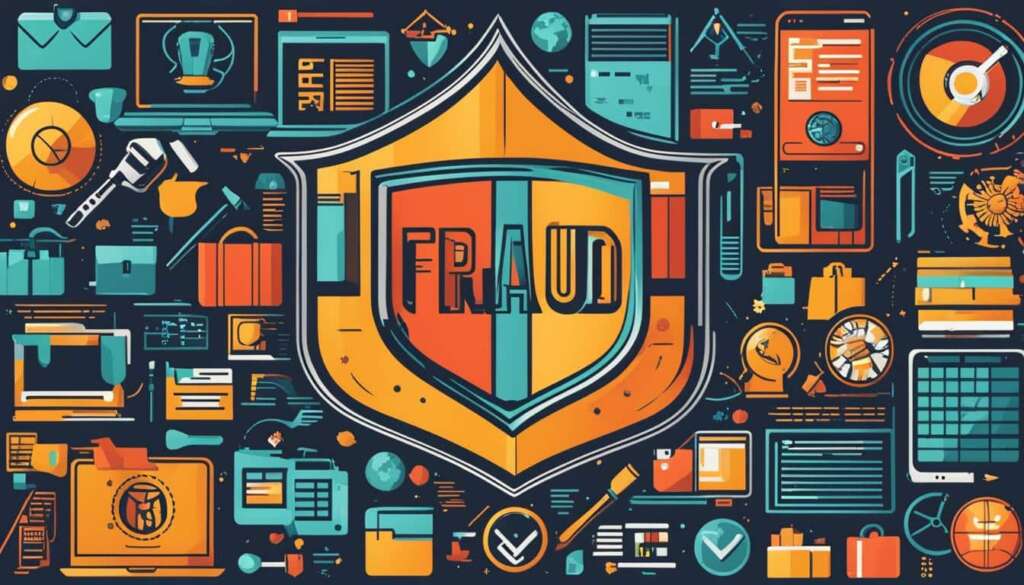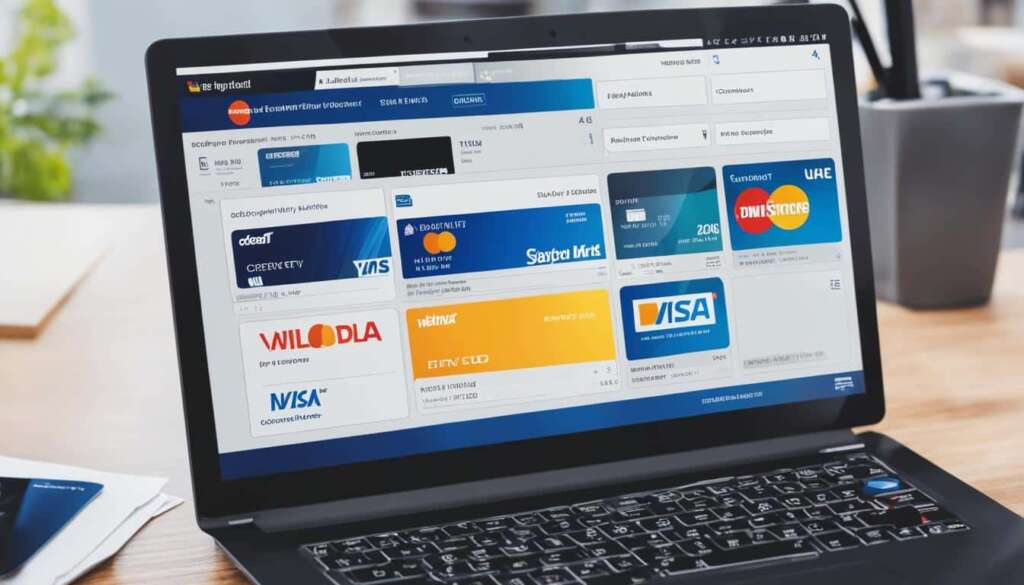Table of Contents
Welcome to our comprehensive guide on e-commerce fraud prevention. In today’s digital landscape, where online transactions are becoming increasingly common, it is crucial for businesses to protect themselves and their customers from fraudulent activities that can result in significant financial losses. In this article, we will explore effective fraud prevention strategies and provide valuable tips to help you safeguard your e-commerce platform.
E-commerce fraud has been on the rise globally, with the US alone reporting a staggering $41 billion in losses due to online payment fraud in 2022, more than double the losses of the previous year. Latin American countries have also experienced significant challenges, with e-commerce fraud accounting for 4.6% of a brand’s overall turnover. It is evident that fraud poses a grave risk to online retailers, making it imperative to implement robust preventive measures.
In the next sections, we will delve into various aspects of e-commerce fraud prevention. We will begin by discussing the different types of e-commerce fraud, including friendly fraud, card testing, refund abuse, online payment fraud, account takeover, promotion fraud, and triangulation fraud. Understanding these types is crucial to identifying potential threats and vulnerabilities in your e-commerce system.
Next, we will explore the reasons behind e-commerce fraud, including data breaches, weak credentials, lack of secure payment verification methods, poor website security, advanced persistent threats, and the rapid growth of the e-commerce industry. By understanding the motivations behind fraud, you can better tailor your prevention strategies.
Afterward, we will dive into actionable e-commerce fraud prevention strategies. These include analyzing customer data, monitoring IP addresses for irregularities, assessing the risk of new markets, utilizing fraud prevention tools and resources, implementing authentication steps, verifying card information, and working with reputable payment processors.
Additio
What is Ecommerce Fraud?
Ecommerce fraud, also known as payment fraud, occurs when scammers intercept a commercial transaction on an ecommerce store with the goal of personal or financial gain.
There are seven common types of ecommerce fraud:
- Friendly fraud: involves customers filing chargebacks with their banks to reverse legitimate purchases, resulting in financial loss for the merchant.
- Card testing: is when fraudsters use stolen credit cards to make small purchases to test their validity before making larger fraudulent transactions.
- Refund abuse: occurs when customers falsely claim damaged or stolen items in order to receive a refund from the retailer.
- Online payment fraud: involves scammers stealing payment details to make unauthorized purchases or creating fraudulent websites to trick customers into making purchases on fake sites.
- Account takeover: occurs when fraudsters gain access to a customer’s online account and use stored payment cards to make fraudulent purchases.
- Promotion fraud: involves affiliates and customers exploiting promotions, loyalty programs, and affiliate marketing to defraud merchants.
- Triangulation fraud: is when fraudsters list products on marketplaces and use stolen credit cards to purchase the items from themselves, resulting in financial loss for both the merchant and the customer.
Understanding these types of ecommerce fraud is essential for businesses to identify and prevent fraudulent activities, protecting both their financial interests and the trust of their customers.
Example:
“Friendly fraud is a significant challenge for ecommerce merchants. It often involves customers making legitimate purchases and then later claiming unauthorized transactions to their banks to secure a refund. This fraudulent practice can result in substantial financial losses for businesses.” – Jane Thompson, Fraud Prevention Expert.
By being aware of the various types of ecommerce fraud, businesses can implement effective fraud prevention strategies and work towards creating a secure online shopping environment for their customers.
Common Types of Ecommerce Fraud
| Fraud Type | Description |
|---|---|
| Friendly fraud | Customers file chargebacks to reverse legitimate purchases |
| Card testing | Fraudsters use stolen credit cards for small purchases to test validity |
| Refund abuse | Customers falsely claim damaged or stolen items for refunds |
| Online payment fraud | Scammers steal payment details for unauthorized purchases or create fraudulent websites |
| Account takeover | Fraudsters gain access to customer accounts and make fraudulent purchases |
| Promotion fraud | Affiliates and customers exploit promotions and loyalty programs |
| Triangulation fraud | Fraudsters list products on marketplaces and use stolen credit cards for self-purchases |
Understanding these types of fraud can help businesses implement appropriate prevention measures and protect themselves against ecommerce fraud.
Reasons for Ecommerce Fraud
Ecommerce fraud is a growing concern in the digital landscape, with fraudsters continuously finding new ways to exploit vulnerabilities for personal gain. Understanding the reasons behind ecommerce fraud is crucial for implementing effective prevention measures. Here are some of the main causes and motivations behind ecommerce fraud:
- Data breaches: Hackers gain unauthorized access to a company’s digital network and steal customer information, which is then used for fraudulent purchases.
- Weak or stolen credentials: Fraudsters obtain login information through phishing attacks or weak passwords, enabling them to make unauthorized purchases or misappropriate funds.
- Lack of secure payment verification methods: Insufficient verification processes, such as two-factor authentication or CVV card verification, make it easier for fraudsters to use stolen card information.
- Poor website security: Vulnerabilities in website security can be exploited for fraud or the implantation of malware.
- Advanced persistent threats (APTs): Fraudsters gain long-term access to a network, remaining undetected as they collect customer data for fraudulent purposes.
- Rapid growth of ecommerce: The increasing popularity of ecommerce has made it a lucrative target for fraudsters, especially for new merchants who may lack robust security measures.
- International transactions: Cross-border transactions can be riskier due to the bypassing of stricter fraud prevention measures and the challenges of prosecuting fraudsters across different countries.
By understanding these reasons for ecommerce fraud, businesses can better identify and address vulnerabilities in their systems, taking proactive steps to protect themselves and their customers from the ever-present threat of fraud. Implementing robust security practices and staying up-to-date with emerging fraud trends are crucial in maintaining a secure ecommerce environment.
Ecommerce Fraud Prevention Strategies
Ecommerce fraud prevention is essential for protecting online businesses and avoiding financial losses and damage to customer trust. By implementing effective fraud prevention strategies, businesses can minimize the risk of falling victim to fraudulent activities.
1. Analyzing Customer Data
One of the key strategies for successful ecommerce fraud prevention is analyzing customer data to identify potential red flags. By looking for suspicious patterns and behaviors, merchants can take proactive measures to prevent fraudulent transactions.
- Identify high order volumes from individual customers, which may indicate fraudulent activity.
- Monitor for low-value orders, as fraudsters often make small purchases to test stolen credit card information.
- Flag instances where different credit cards are used by the same customer, as this may indicate unauthorized account access or stolen card information.
- Keep an eye out for repeated declined transactions, as fraudsters may attempt multiple transactions before finding a valid credit card.
2. Monitoring IP Addresses
Monitoring IP addresses can help merchants detect inconsistencies and potential fraud. By tracking the location and behavior associated with each IP address, businesses can identify suspicious activities.
- Look for location inconsistencies, such as orders placed from IP addresses in different countries within a short period of time.
- Flag multiple orders coming from the same IP address, which could be an indication of fraudulent behavior.
3. Assessing New Markets
Expanding into new markets can be exciting for ecommerce businesses, but it also introduces new risks. Assessing the risk associated with new markets is crucial for effective fraud prevention.
- Identify high-risk regions based on historical data or industry reports.
- Implement additional fraud prevention measures in high-risk regions, such as stricter verification processes or manual review of suspicious transactions.
4. Utilizing Tools and Resources
Utilizing tools and resources can significantly enhance ecommerce fraud prevention efforts. Here are some key resources and best practices:
- Invest in data analysis tools to detect patterns and anomalies indicative of fraud.
- Monitor IP addresses using IP geolocation services or fraud prevention software.
- Partner with reputable payment processors that offer secure verification methods for transactions.
5. Implementing Authentication Steps
Implementing authentication steps can help identify and prevent fraudulent interactions with your ecommerce platform.
- Introduce CAPTCHA or other verification methods for unusual or high-risk orders.
- Enable secure multi-factor authentication for suspicious logins.
6. Verifying Card Information
Verifying card information is crucial for preventing ecommerce fraud. Implement the following practices to ensure the billing address matches and reduce the risk of fraudulent transactions:
- Perform CVV checks to verify the validity of credit card information.
- Utilize address verification services to confirm that the provided billing address matches the cardholder’s information.
7. Implementing 3D Secure 2.0
3D Secure 2.0 is an additional layer of security for online credit and debit card transactions. By implementing this protocol, businesses can verify shopper identity and reduce the risk of fraud.
8. Working with Reputable Payment Processors
Choosing reputable payment processors is essential for ecommerce fraud prevention. Partnering with trusted providers ensures secure payment processing and reduces the risk of fraudulent transactions.
9. Ensuring Website Security
Maintaining a secure website is crucial for preventing ecommerce fraud. Implement the following measures to safeguard customer data:
- Utilize firewalls and other security measures to protect your website from external threats.
- Maintain PCI-DSS compliance to ensure secure handling of cardholder data.
- Use HTTPS for secure data transmission between your website and customers.
- Regularly update your website and fraud prevention technology to stay ahead of emerging threats.
Ecommerce Fraud Prevention Software
Ecommerce fraud prevention software and tools play a critical role in automating fraud detection and prevention processes. These software solutions provide a range of features designed to enhance the security of your online business and protect against fraudulent activities.
Key features of ecommerce fraud prevention software include:
- Advanced data analysis and machine learning algorithms to identify patterns and anomalies that may indicate potential fraud.
- Real-time monitoring of transactions and customer behavior to detect suspicious activity as it happens.
- Integration with payment gateways and verification services to ensure secure payment processing and minimize the risk of unauthorized transactions.
- Customizable rules and filters that allow you to flag high-risk transactions and trigger additional verification steps for added security.
- Chargeback management and dispute resolution tools to streamline the handling of fraudulent chargebacks and resolve them efficiently.
- Risk assessment and scoring systems that prioritize fraud prevention efforts based on the level of risk associated with each transaction.
- Collaboration and reporting features that facilitate communication between teams and enable the tracking of fraud prevention performance and metrics.
When it comes to ecommerce fraud prevention software, there are several popular options available in the market. One notable example is Shopify Protect, which offers built-in fraud protection features specifically tailored for merchants using the Shopify platform. Other trusted third-party solutions include Signifyd, Riskified, and Forter.

Conclusion
Ecommerce fraud prevention is crucial for protecting online businesses from financial losses and maintaining customer trust. With the increasing threat of fraud in the rapidly growing ecommerce industry, it is essential for online merchants to implement effective strategies and technologies to mitigate the risk of fraud.
By analyzing customer data, monitoring IP addresses, and implementing secure payment verification methods, online merchants can proactively identify and prevent fraudulent transactions. Additionally, keeping websites secure with firewalls and maintaining PCI-DSS compliance helps to safeguard sensitive customer information.
To further enhance fraud detection and prevention efforts, utilizing ecommerce fraud prevention software and tools is recommended. These solutions leverage advanced data analysis, real-time monitoring, and integration with payment gateways to identify patterns and anomalies indicative of fraudulent activity.
In summary, ecommerce fraud prevention requires a multi-faceted approach that combines strategic implementation of fraud prevention strategies, secure payment verification methods, and the use of advanced fraud prevention software. By staying vigilant, adapting to new fraud trends, and continuously improving prevention measures, online businesses can safeguard their operations and ensure a secure and trustworthy shopping experience for their customers.
FAQ
What is e-commerce fraud?
E-commerce fraud, also known as payment fraud, occurs when scammers intercept a commercial transaction on an e-commerce store with the goal of personal or financial gain.
What are the types of e-commerce fraud?
There are seven common types of e-commerce fraud: friendly fraud, card testing, refund abuse, online payment fraud, account takeover, promotion fraud, and triangulation fraud.
What are the reasons for e-commerce fraud?
E-commerce fraud can stem from various sources and motivations, including data breaches, weak or stolen credentials, lack of secure payment verification methods, poor website security, advanced persistent threats, the rapid growth of e-commerce, and international transactions.
What are some strategies for successful e-commerce fraud prevention?
Strategies for successful e-commerce fraud prevention include analyzing customer data, monitoring IP addresses, assessing the risk of new markets, utilizing tools and resources, implementing authentication steps, verifying card information, implementing 3D Secure 2.0, working with reputable payment processors, and keeping your website secure.
How can e-commerce fraud prevention software help?
E-commerce fraud prevention software and tools are crucial for automating fraud detection and prevention processes. These solutions offer advanced data analysis and machine learning algorithms, real-time monitoring of transactions, integration with payment gateways and verification services, customizable rules and filters, chargeback management and dispute resolution tools, risk assessment and scoring systems, and collaboration and reporting features.
Why is e-commerce fraud prevention important?
E-commerce fraud prevention is essential for protecting online businesses from financial losses and maintaining customer trust. With the rapid growth of e-commerce and the increasing threat of fraud, it’s crucial for online merchants to stay vigilant, adapt to new fraud trends, and continuously improve their fraud prevention strategies and technologies.













